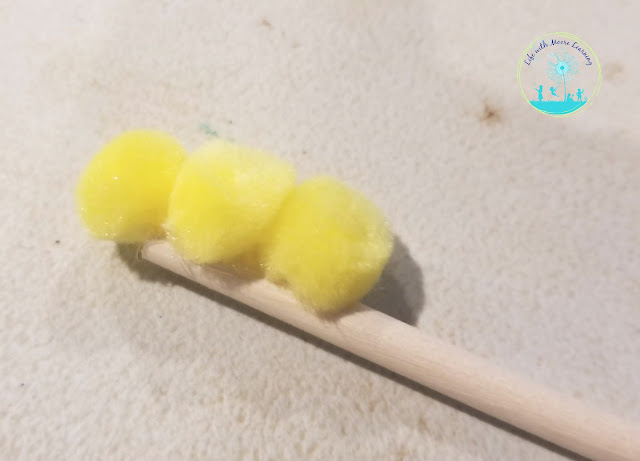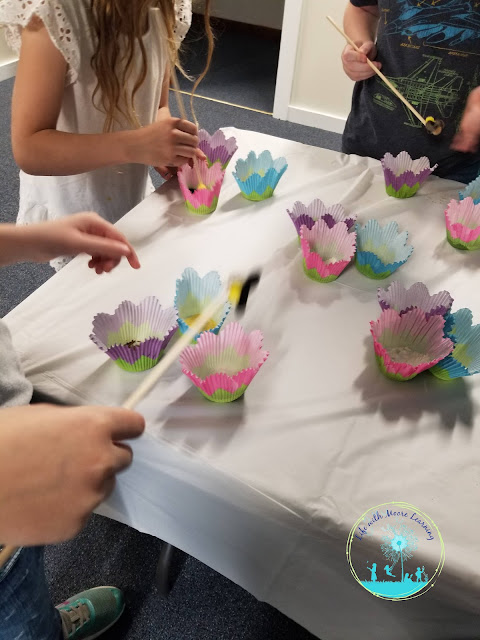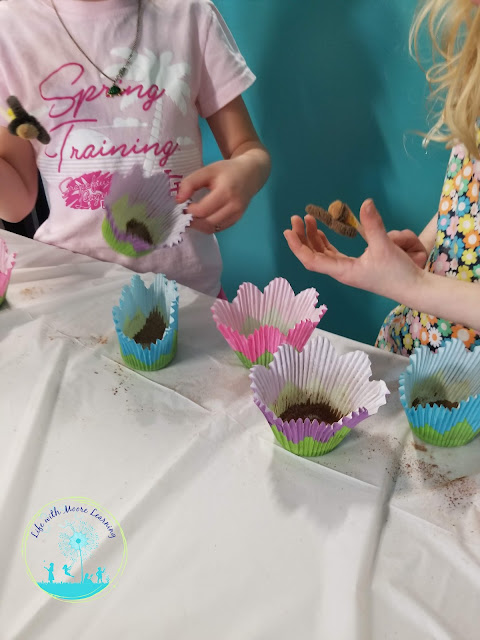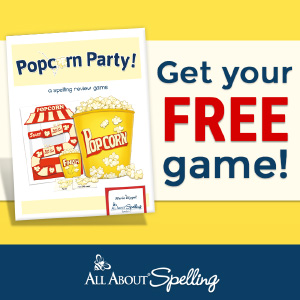Bees. They aren't the most loved of insects are they? After all they do sting which can cause a little apprehension. But bees are also incredibly important! I think teaching kids about their importance in pollination can help alleviate some of the fear. Plus who doesn't love a fun little science experiment.
Supplies for a Pollination Experiment
Creating Bees for a Pollination Experiment
To start with you need to make your bugs; we were studying bees, so we went with yellow pom poms and black pipe cleaners. I didn't want to spend our homeschool co-op time making the bugs, so I went ahead and made them ahead of time for the kids. I did do one per child, so they could really appreciate the change that happen when they pollinated with it. I also didn't want them playing with hot glue which is the fastest way to adhere pom poms to dowel rods.
To create your bees place a small line of hot glue along the end of a dowel rod. Add two pom poms to that. Then add some hot glue to the end pom pom and the end of the dowel and add your third pom pom. That makes the body.
For the wings, cut the pipe cleaners in half. Form a small loop and each end and twist it around the bee between the head and the body. These were secure enough for me that I didn't even need to glue them.
Now you have bees! You will need one for each child that is participating because they are going to get dirty.
Setting Up the Pollination Experiment
Now that your bees are ready to go you need some flowers with pollen. For this take your cupcake papers and add a small amount of flour to one, cornmeal to the next, and cocoa to the last. Be sure it is a small amount! These are the flowers with the pollen for your bees.
Pollinating with your Bees
Each child needs a set of "flowers" and a bee. They will take their bee and dip it in one flower and then another. It should be pretty noticeable that the pollen (flour, corn meal, or cocoa) sticks to the fuzzy bee and transfers to the next flower. That is why I love the flower shaped cupcake papers; you can add your "pollen," and it looks like the bees are actually visiting the flowers.
The different colored pollens make it easy to see how the pollens would mix in the various flowers, and in my experience the kids will keep pollinating until all the flowers contain the same color pollen.
The Science Behind the Pollination Experiment
This experiment allows kids to see how bees transport pollen from flower to flower. This mixing of pollen allows the eggs in the flowers to be fertilized leading to seeds. Without pollination there are no seeds. Without seeds there is no food! So despite their stingers, bees are not out to get us in anyway. They just want to pollinate flowers and we want that too.
More Great Bee Books!


























